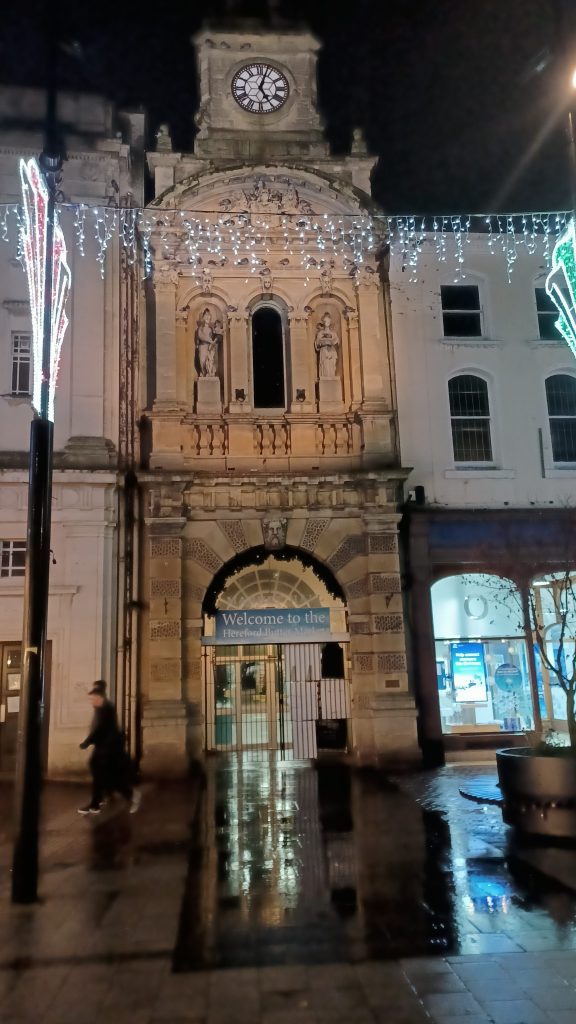
Today’s photo shows the Georgian entrance to the market hall in Hereford town centre, picture taken Christmas Eve.
After writing blog 32 I realised that there may have been a connection between the Charterhouse Board school picture and the development of North Hull Estate as some of the children that attended Charterhouse may have been re-home as their old homes were being demolished, in the Alfred Gelder Street area for example.
North Hull estate and Preston Road estate, built in the late 1920s and 1930s, were edge of town housing estates and thus tenants experienced the fors-and-againsts often associated with post-war new estates. As regards shopping facilities the 1930s big estates were allocated shopping ‘precincts’ but they, unlike the houses were not directly under local authority control and relied on private tradesmen paying the ground rent. The town centre facilities were now much more distant than they had been before the tenant’s previous homes were demolished. Tram services or bus services may have been extended to the new estates but fares had to be paid. Schools were also built (remembering that the school leaving age in the 1930s was 14 so that many children left school having attended just one school, no secondary school) and this level of public service provision not always matched in modern developments. Psychological impacts tended to emerge also for although the space and internal fixtures and fittings were far better than in the tenant’s previous accommodation, nevertheless, housewife isolation sometimes weighed-heavy. Expenses increased with increased travel costs, especially for workmen, and a degree of inevitable nostalgia for the old days.
I have only recently discovered an absolutely brilliant blog related to our current topic – ‘Municipal Dreams’, very thoroughly researched.